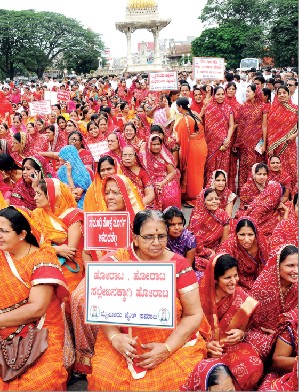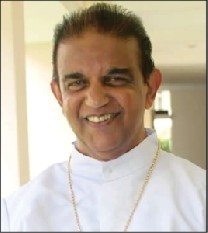20 craftsmen took three years to create the 900-kg sculpture
by S. Kenneth Shishir
City artisans, who are also recipients of State Awards, have sculpted a five feet tall elephant from a single block of rosewood.
Artisans Khalil ur Rahman Khan alias Parveez Khan, Fazlur Rahman Khan alias Touseef Khan, Hafeez ur Rahman Khan alias Tanveer Khan and Habeeb ur Rahman alias Asif Khan, sons of late A. Majeed Khan, a recipient of Karnataka State Award in 1985 and National Award in 1991, have sculpted this wooden elephant at their workplace Majeed Fine Arts on Anegundi Road in Mandi Mohalla in city.
Khalil ur Rahman, the eldest among the four brothers, speaking to SOM, said that Mysuru is the birth place for inlay work and is famous for rosewood inlay craft all over the world.
He said that to promote rosewood inlay work and to keep the tradition alive, his father late A. Majeed Khan, established Majeed Fine Arts in city in the year 1972 and since then many artisans have been trained in the inlay work by his father, who have made big names now.
Khalil further said that the Karnataka Government recognising the outstanding and excellent inlay works made by his late father awarded him with a State Award in 1985 and a National Award in 1991.
He said that his brother Fazlur Rahman Khan is a recipient of Karnataka State Award in 1995 and a National Award in 1997 while another brother Hafeez ur Rahman is a recipient of Karnataka State Award in 2003.
Khalil said that his younger brother Habeeb ur Rahman is also a recipient of the State Award in the year 2003 with himself being a recipient of the State Award for the year 2004-05.
When asked why did he and his brothers choose to sculpt an elephant when they could have sculpted anything, Khalil said that getting a single piece of rosewood was very rare and added that he procured the rosewood at an auction in Kushalnagar about three years ago. He further said that he and his brothers decided to sculpt a big elephant from the single piece of rosewood as Mysuru is famous for the world famous Dasara in which elephants play an important role especially during the Jumboo Savari.
When asked whether it was he and his brothers alone sculpted the elephant? Khalil said that they took the help of 20 craftsmen to complete their dream project and sculpted the elephant from a single solid block of rosewood.
He said that to decorate the sculpture they used inlay work. While 60% of the inlay work has been done using ‘Mother of Pearls,’ the remaining 40% work was done using natural wood colours for further decoration of the wooden elephant.
He said that to represent Karnataka, we have used the logo of the State along with our National Emblem on the side and a Gandaberunda on the forehead of the elephant besides birds, animals, flowers, etc.
When asked about the procedure of sculpting the elephant, Khalil said that as the first step, we made a design and drew an outline image and patterns on the solid rosewood block. Then the rosewood was carved into proper shape and cut into three parts (Head, body and tail) to give proper shape. The motifs that had to be inlaid were hand-cut and the area where the motifs had to be inlaid were carefully scooped out and the motifs were inlaid and fixed, he said and added that the sculpture was then smoothened using sandpaper and polished to give a bright look and joined together.
Khalil said that after the elephant was sculpted, it was 5 ft. tall, 3 ft. wide, 6.6 ft. in length and weighed about 900 kgs. The wooden sculpture has been shifted to Cauvery Emporium on Sayyaji Rao Road where it is kept on display now.
source: http://www.starofmysore.com / Star of Mysore /Home> Feature Articles / Wednesday – September 09th, 2015







